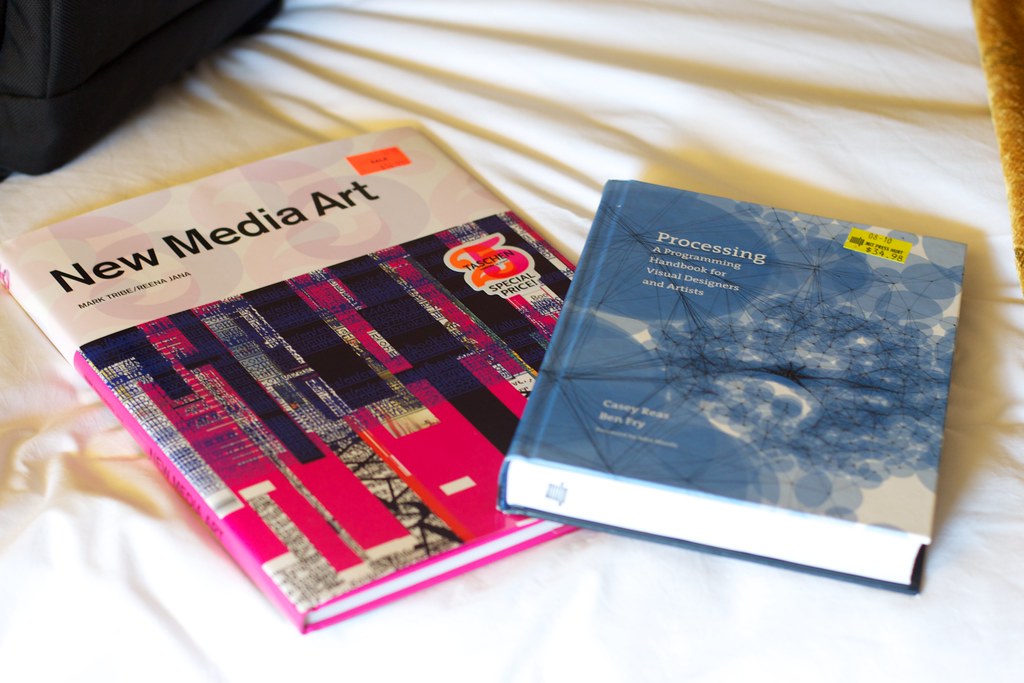It’s no surprise that Jay Hoffman writing about The Analog Web caught my eye, not for nostalgia, but something that circles forward. I’ve been following Jays History of the Web writing since, well I can’t remember when, and am pleased to see he has gotten federated.
Of many points I could grab as a Gardner Campbell gold sprinkled “nugget”, his mention of net.art clanged a neuron.
For instance, in the much earlier days of the web, a group of artists and writers found each other out amongst the nodes of the network. They began creating websites unified only by a shared interest in what could be achieved on the web. After a while, they gathered under the banner of Internet Art, or net.art for short. Their online creations ranged from hypertext poetry and avant garde stories to websites that extended performances into the real world or challenged the idea of what a website even was.
I refer, as I have before, to Rachel Greene in reference to her book about Net.art and the importance of the movement:
https://thehistoryoftheweb.com/the-analog-web/I refuse to let commercial interests dominate the history and perception of the net because I think they would exclude the most important and dynamic internal content – the aesthetic, creative, radical, political ideas and experiments
On a whim in 2010, during a visit to the hallowed MIT grounds in Cambridge, I picked up some books in the MIT Bookstore.
I was working for some now defunct organzation that had “new media” in its moniker, but actually did not know the stuff inside had this name of “net.art.” The books content was fully available (once) on a wiki, and all of the exhibits inside were of course visitable on the web.
In 2010.
Sometime much later, I took it on myself to run my own project to revisit the sites, collecting updates, archive links in a tumblr site (wow did I have a time remembering how to login and navigate tumblr-ville) a called (re) New Media Art.
Each entry included a screenshot, a link if it existed, if not, an internet archive link. Yup, I guess I blogged about it too it looks like I did a thing with the tumblr RSS feed and ancient syndication trickery to republish them in my blog. My gosh it worked, small pieces loosely taped together.

I only got a portion of them done, well maybe only 6 yet another started, partly done CogDogBog
When I taught the Networked Narratives course, I did give my students an assignment to research the ones I had not completed, and generate the entry for which they got credit – e.g see the “researched by” credit for the revisit to My Boyfriend Came Back from the War. The four newest ones on the site were done by students (and one by the venerable participant in everything @dogtrax).
The point here is Jay’s mention of net.art sent me back to look at my site, its still there, and just out of curiosity, I followed the original link for the Life Sharing site, where the domain itself is art http://0100101110101101.org/home/lifesharing/index.html to find a redirect… woah it is now part of a Rhizome exhibit of Net Art Anthology that is much much better (more media and references) than my crappy tumblr.

I have to see the whole Anthology is a rich trove of net.art. That is alive, with a pulse. That’s a lot because it is published in those old formats that still work. You want durability over the long haul? Stay with HTML.
One link leads to another to another (and Alan getting distracted!)
Featured Image: Simple Net Art Diagram animated GIF by MTAA. The Net Art Anthology states it is licensed under a Creative Commons license” but the old school source page indicates it is placed into the public domain using Creative Commons CC0. See Nate Angell! Some of us make the distinction clear!





@topdog WOOT! Changes in ActivityPub plugin format worked., The URL now hyperlinks and the extra #cogdogblog tag is tagged
Remote Reply
Original Comment URL
Your Profile
Great…now I’ll forever be known as the CC0 police ?
The job is yours if you want it. But not a cop, just a constructive advisor?
Heck just let AI do it.